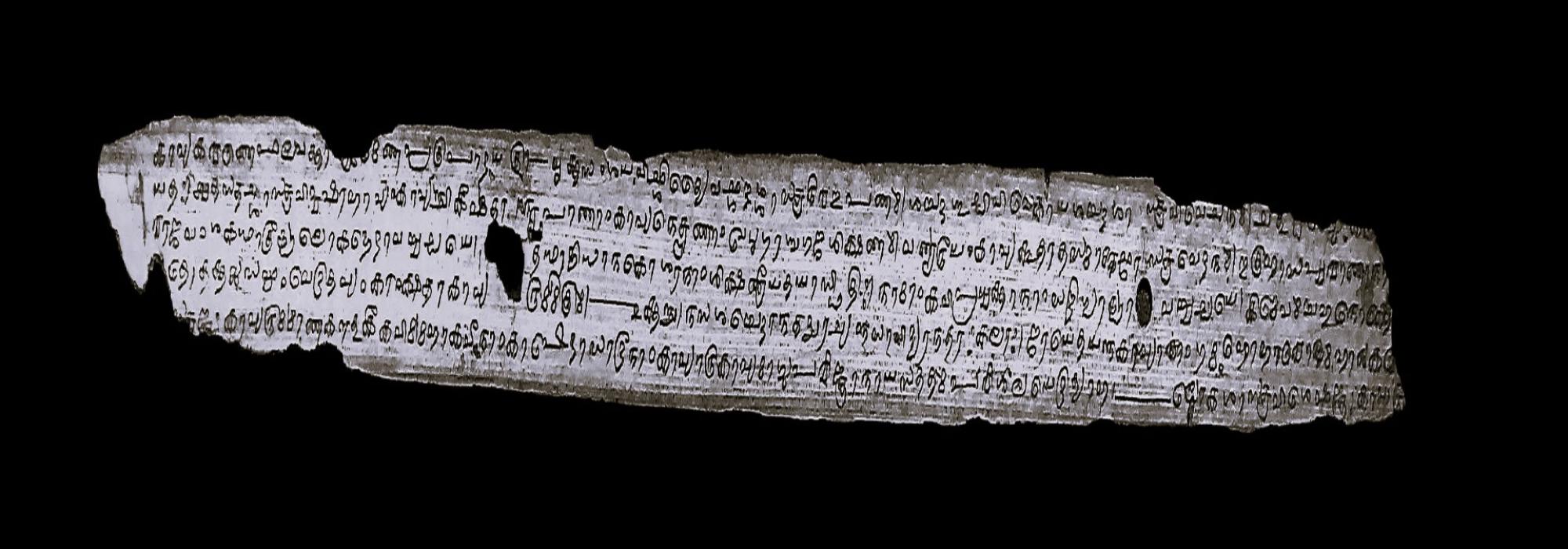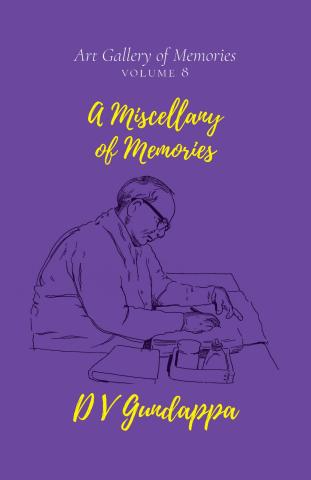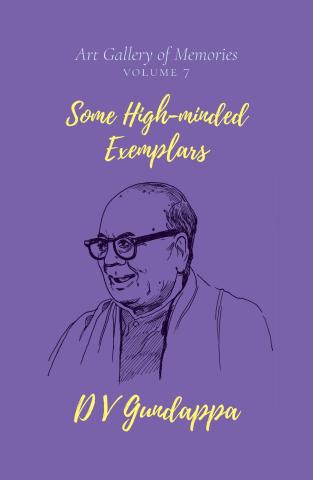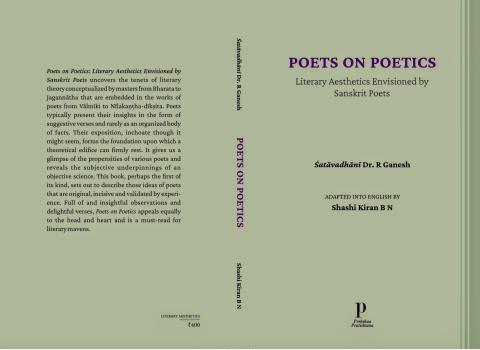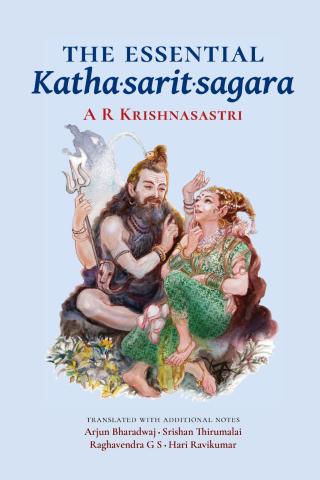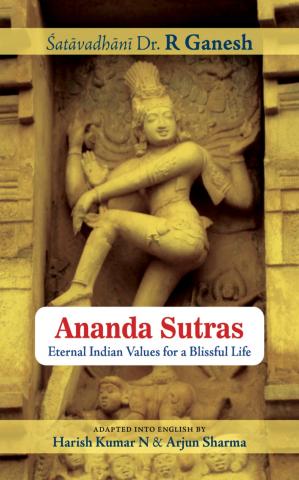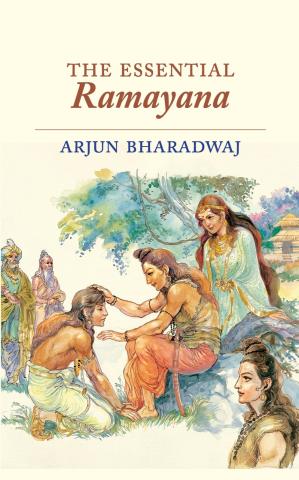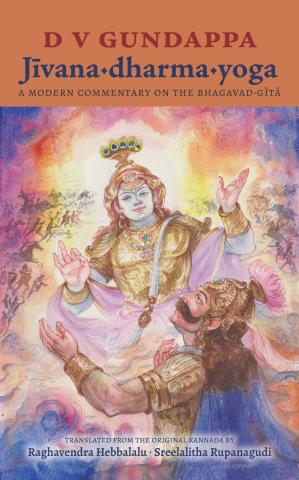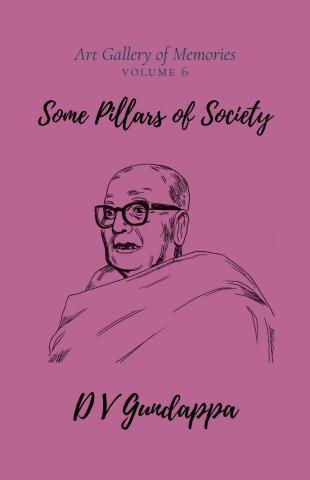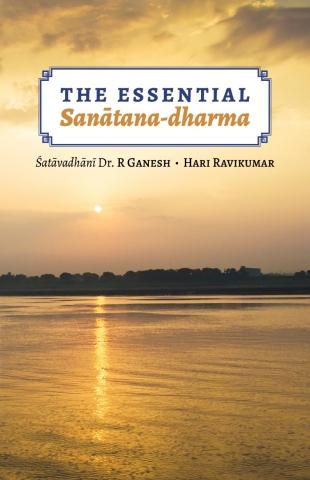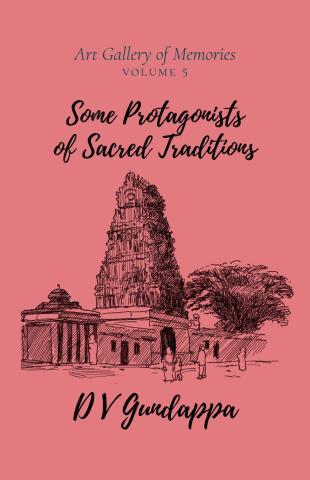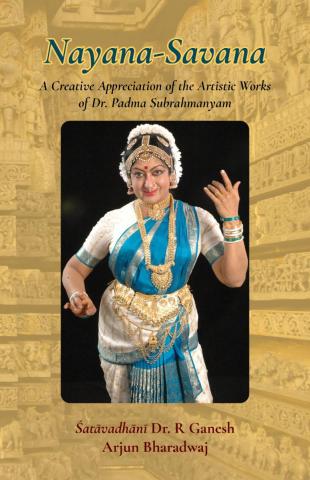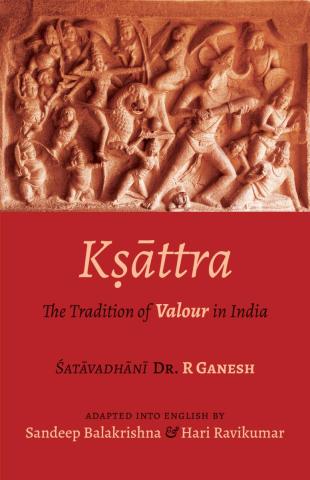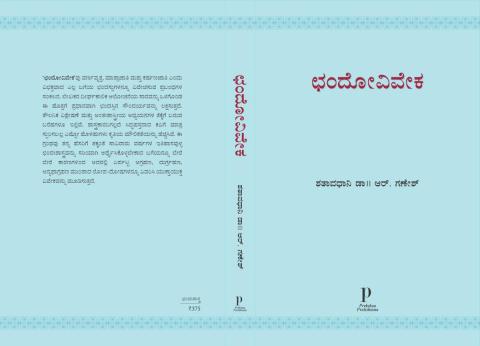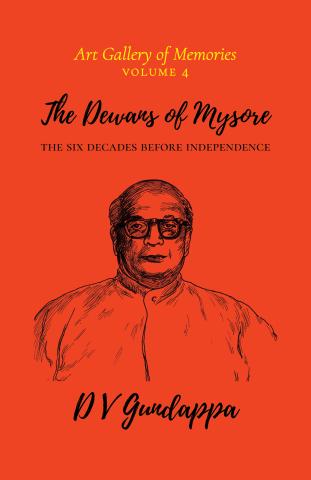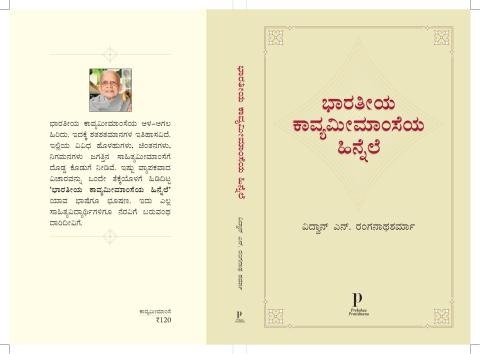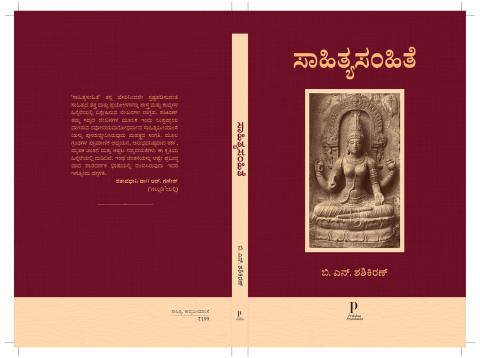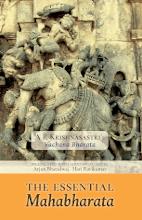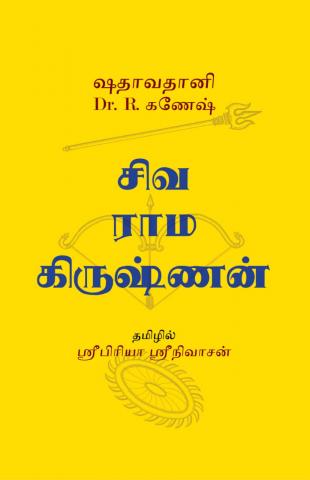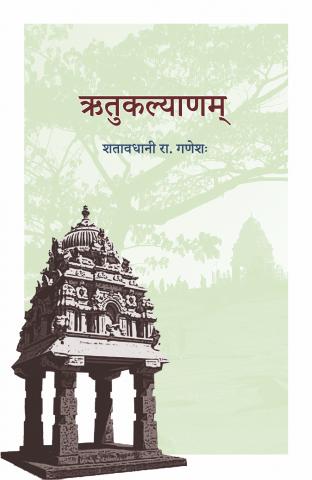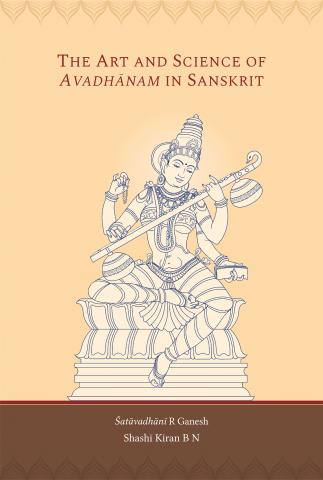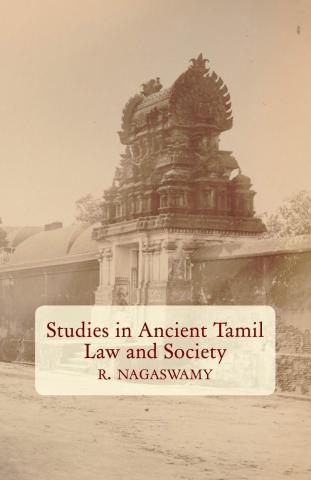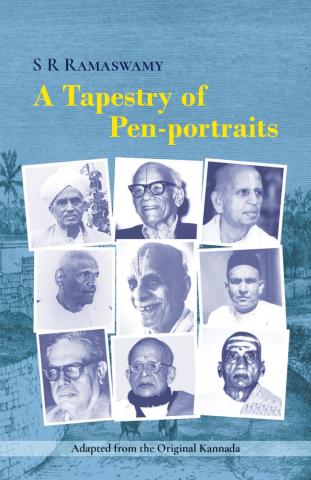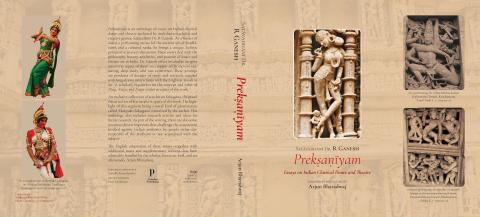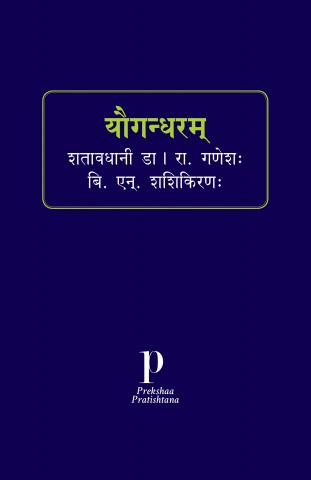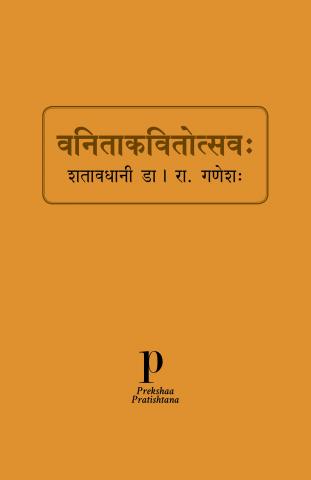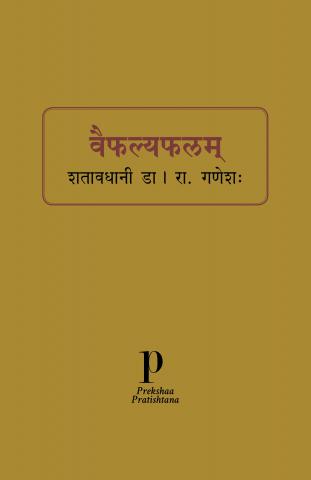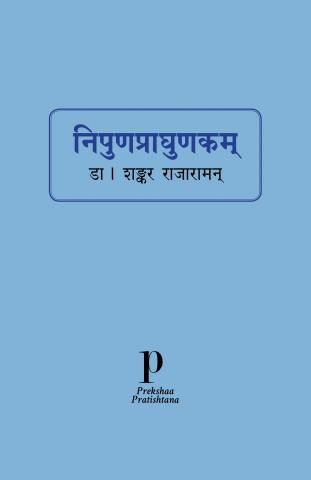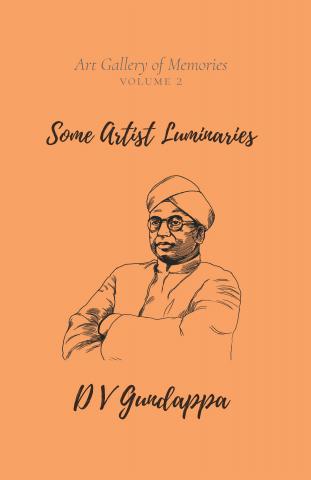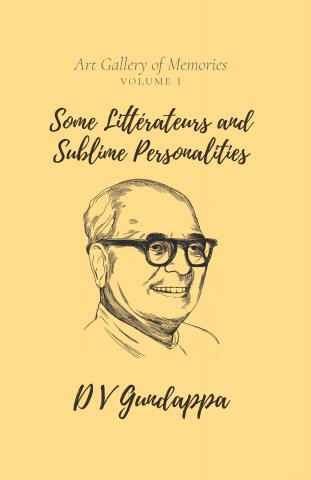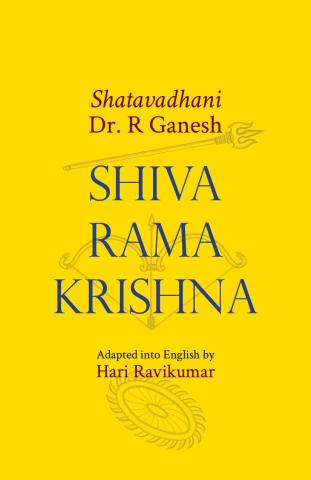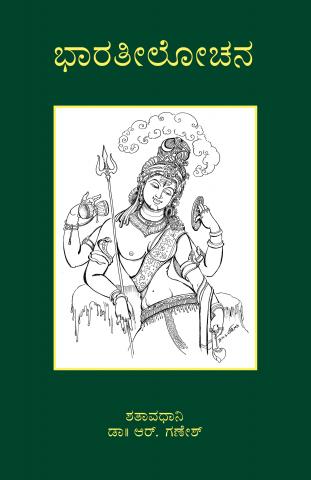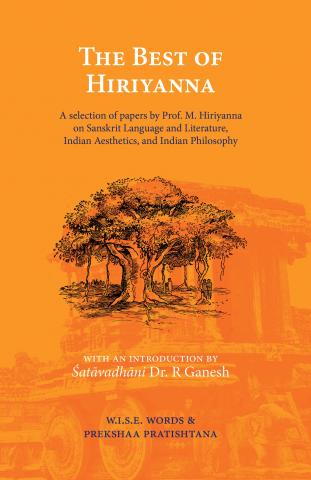४.२. गुणदोषौ
शरीरगताः शौर्यादयो गुणा आत्मानमिव काव्यशरीरगताः प्रसादादयो गुणाः काव्यात्मानं रसम् उत्कर्षयन्ति—
शौर्यादय इवात्मानं ये धर्मा अङ्गिनं रसम्।
उत्कर्षयन्ति नियतस्थितयस्ते गुणा इह॥ १.१११
नयन्ति नित्यमुत्कर्षं समवायाद्रसं गुणाः।
शौर्यादय इवात्मानं शरीरेषु शरीरिणाम्॥ १.११३
गुणानां रसधर्मत्वम् अभ्युपगच्छन् सायणाचार्यः शब्दार्थमात्रगोचरांस्तान् कथयतः शास्त्रकृतः प्रत्याचष्टे—
इत्थं रसैकधर्मत्वं गुणानामुपपादितम्।
भ्रान्त्यैव केवलं प्राहुरज्ञाः शब्दार्थधर्मताम्॥ १.११५
भामह-आनन्दवर्धन-भट्टगोपालादीनां पूर्वाचार्याणां मतम् अनुसरता सुधानिधिकृता गुणानां त्रैविध्यम् अभ्युपेयते—
माधुर्यौजःप्रसादाख्यास्त्रय एव गुणा इह॥ १.१२२आ
वामनेन प्रतिपादितं गुणानां दशविधत्वं निराकुर्वाणेन सायणाचार्येण तत्रेमा उपपत्तयः समाश्रीयन्ते—
अन्ये ये वामनाद्युक्ता अत्रैवान्तर्भवन्ति ते।
अनन्तर्भाविनो दोषत्यागाद्दोषाश्च संश्रिताः॥ १.१२६
अत्र निरूपितानि माधुर्यौजःप्रसादानां लक्षणानि काव्यप्रकाशोक्तैः सह लक्षणैः साम्यं भजन्ते। तद्यथा—
आनन्दकृत्त्वं माधुर्यं शृङ्गारे द्रावयन्मनः।
करुणे विप्रलम्भे तच्छान्ते चाधिक्यवत्क्रमात्॥ १.१२३
ओजो दीप्त्यात्मविस्तारकारणं समुदाहृतम्।
वीरबीभत्सरौद्रेषु क्रमेणैतत्प्रकर्षति॥ १.१२४
“किञ्चिन्मग्नमनोवृत्तिस्वभावेऽपि भयानके।
दीप्तत्वेन विभावस्य भजत्योजः परां भुवम्॥” (एकावली, ५.५)
“यश्चित्तं व्यश्नुतेऽह्नाय शुष्केन्धनमिवानलः।
स प्रसादो गुणः सर्वरससाधारणस्थितिः॥” (एकावली, ५.६)
भयानकरसनिरूपणे ओजः काष्ठां गच्छतीति ब्रुवाणः सायणाचार्यो विद्याधरम् अनुसरतीति स्फुटम्॥
सङ्घटना हि गुणानाश्रयते, कानिचिदक्षराणि कांश्चन गुणान् तथा हि नाम परिपोषयन्ति यथा नान्यानि, तस्मात् शब्दनिष्ठा अर्थनिष्ठा वेति गुणान् विभक्तुमसाम्प्रतम्—इत्थं प्रतिपादयन् सायणाचार्यो महता ग्रन्थसन्दर्भेण वामनमतं खण्डयति (१.१२२–५७)।
दोषं निरुरूपयिषुः मुख्यार्थव्याहतिरेव दोषः, रसश्च मुख्य इति कथयति—
मुख्यार्थव्याहतिर्दोषो रसो मुख्यस्तदाश्रयात्। १.११०
अथ च काव्यादर्शानुसारेण (१.७) दोषान् श्वित्रादिसमानान् आह—“दोषाः श्वित्रादिवत्” (१.११८)।
यद्यप्यत्र न दोषाः सामस्त्येन विवृताः, तथापि चतुर्विधास्ते ग्रन्थकारेण अभ्युपगता इति प्रतीयते (१.११० वृत्तिः)। तद्यथा—
- शब्ददोषः – च्युतसंस्कारादिः
- वाक्यदोषः – प्रतिकूलवर्णत्वादिः
- उभयदोषः – श्रुतिकटुत्वादिः
- रसदोषः – स्वशब्दवाच्यत्वादिः
४.३. अलङ्कारः
अलङ्कारसुधानिधेः तृतीय उन्मेषः शब्दार्थालङ्कारौ प्रतिपादयति। सोऽयं खण्डमात्रेण उपलभ्यत इत्यतः सायणाचार्योपज्ञम् अलङ्कारस्वरूपं न पारिपूर्ण्येन विज्ञायते। अत्र काव्यप्रकाशः साहित्यचूडामणिश्च प्रतिपदं समाश्रितौ। सायणाचार्यो हि तृतीयमुन्मेषम् आरभमाणो नात्मोपज्ञाः कारिकाः प्रत्युत साहित्यचूडामणेः कानिचन पद्यानि उपाश्रयत इति विस्मयस्य स्थानम्॥
अलङ्काराः शब्दार्थसंस्थिताः काव्यात्मानं हारादिवत् परिभूषयन्ति—
ये त्वङ्गभूतशब्दार्थद्वारा तं सन्तमेकदा।
अलङ्कुर्वन्त्यलङ्कारा हाराद्या इव ते पुनः॥ १.११२
अलङ्कारप्रधानम् अस्फुटव्यङ्ग्यं च काव्यं चित्रमित्यभिधीयते सायणाचार्येण—
तस्यास्फुटत्वेऽलङ्कारप्राधान्ये काव्यमिष्यते।
चित्रशब्दार्थविषयमधमं चित्रमित्यपि॥ १.१००
शब्दालङ्कारान् शब्दचित्रकुक्षौ अर्थालङ्कारान् अर्थचित्रकुक्षौ च निक्षिप्य निरूपयन् सुधानिधिकारः षट् शब्दालङ्कारान् उपस्थापयति। ते हि—वक्रोक्तिः अनुप्रासः यमकं श्लेषः चित्रं पुनरुक्तवदाभासश्च। कुन्तकप्रतिपादितं वक्रोक्तेः सर्वङ्कषं स्वरूपं जानन्नपि सायणाचार्यस्तां शब्दालङ्कारसीमितां पर्यजीगणदिति किमपि वैलक्षण्यम्॥
ग्रन्थेऽस्मिन् त्रय एवार्थालङ्काराः प्रतिपादिताः। ते तावत्—उपमा अनन्वयः उपमेयोपमा च। अत्रोपमा एकैव सप्रपञ्चं निरूपिता। (उपमेयोपमायाम् उपपाद्यमानायां ग्रन्थ एकपदे अवसित इति पूर्वमभ्यधायि।) उपमां श्रौत्यार्थीभेदेन विभिन्दानः सायणाचार्यो रुय्यक-हेमचन्द्र-भोजादीनां मतानि अवगणय्य मम्मटस्यैव मतम् अन्वसरत्। अत्रेदमवधेयम्। अलङ्कारविभागनिरूपणे रुय्यक एव तत्परवर्तिनाम् आलङ्कारिकाणां मार्गदर्शी बभूव। अथापि सायणाचार्यो न तन्मतं सम्मेने। अलङ्कारसुधानिधिं प्रभावयन्ती एकावलिरत्र कारणं स्यात्॥
४.४. ध्वनिः
ध्वन्यालोकं पुरस्कुर्वन् अलङ्कारसुधानिधिः अभिधा-लक्षणा-व्यञ्जनाभेदेन तिस्रः सन्ति शब्दवृत्तय इत्याख्याति, एतदतिरिक्तां तात्पर्यवृत्तिं च प्रत्याख्याति—
तात्पर्यतोऽर्थमप्येके केचिदालङ्कारिका अनुवाद्यानामर्थानां विधेयार्थपरत्वं तात्पर्यमिति कमपि व्यापारमधिकृत्य तस्मात्प्रतिपन्नमर्थं तात्पर्यार्थमङ्गीकुर्वन्ति—“उमां स पश्यन्नृजुनैव चक्षुषा प्रचक्रमे वक्तुमनुज्झितक्रमः” । अत्र दर्शनस्य चक्षुःकरणत्वाव्यभिचाराद्यत्तदुपादानं तद्विशेषणार्थम्। तदेव चात्र विधेयम्। तत्परत्वमेव तात्पर्यम्। एषा वृत्तिरस्मन्मते कथञ्चिद्दूष्या च।
काव्यप्रकाशं प्रतिकलम् अनुसरन्नपि लक्षणावृत्तिनिरूपणावसरे तत्क्षुण्णाद्वर्त्मनो व्यतिगच्छति। तथा हि—रूढिलक्षणां निराकरोति, प्रयोजनाभावात्। मम्मटेन प्रतिपादितान् लक्षणायाः षट् प्रकारान् उररीकृत्य सप्तममपि प्रकारं जहदजहत्स्वार्थाभिधं विद्याधरमतानुसारेण[1] निरूपयति। इमे सर्वेऽपि प्रभेदाः प्रयोजनलक्षणायाम् अन्तर्भवन्ति—
“निरूढा लक्षणाः काश्चित्सामर्थ्यादभिधानवत्” इत्युक्तत्वाद्व्यङ्ग्यभूतप्रयोजनशून्यत्वात् कुशलादिषु रूढिलक्षणाया अभिधाप्रायत्वाद्व्यङ्ग्यस्यैव कार्यत्वाद्रूढिलक्षणामुपेक्ष्य जहत्स्वार्थामजहत्स्वार्थां जहदजहत्स्वार्थां द्विविधां सारोपां द्विविधां साध्यवसानां चाङ्गीकृत्य सप्तविधत्वं लक्षणायाः प्रतिपादितम्।
इत्थं प्रयोजनवती सप्तविधा लक्षणा दृष्टा। २.१६अ
व्यङ्ग्यमेव काव्यस्य जीवितम्। तेन विना अलङ्कारादीनां सद्भावेऽपि काव्यत्वं खपुष्पायते—
व्यङ्ग्यस्य सत्ताच्छायापि यत्र नायात्यवस्थितिम्।
अलङ्कृतमलङ्कारैरपि काव्यं न तद्भवेत्॥ १.१०१
तद्व्यङ्ग्य एव वाक्यार्थः काव्यजीवितमिष्यते। १.९२
यथा योषितां लज्जैव मुख्या भूषा भवति, तथा काव्यानां ध्वनिः सर्वालङ्कारातिशायीति आनन्दवर्धनम्[2] अनुधावन् सायणाचार्यो ब्रवीति—
यथा केयूरहारनूपुराद्यनेकालङ्कारालङ्कृतानामपि स्त्रीणां लज्जैव मुख्या भूषा भवति, तथा चित्रयमकश्लेषाद्यनेकालङ्कारालङ्कृतानामपि महाकविगिरां प्रतीयमानार्थच्छायैव मुख्या भूषा भवति।
ध्वनिध्वंसकं महिमभट्टं मम्मटोपदिष्टेन नयेन निराकुर्वन् सुधानिधिकारः ध्वनेः अप्रकम्प्यतां साधयति—
वाच्यस्य लिङ्गभावेन व्यज्यमानं प्रतीह तु।
व्यञ्जनस्यानुमानान्तर्भावं यन्महिमाभ्यधात्॥ १.९५
अविचार्यैव तत्प्रोक्तं तेन व्यक्तिविवेकिना।
वाच्यस्य व्यज्यमानेन न तादात्म्यतदुद्भवे॥ १.९६
इति ध्वनिवादनिराकरणपादप्रसारिकायमाणो व्यक्तिविवेकखण्डः प्रत्याख्यातः। यस्मादभिधाया उपरि लक्षणा तदुपरि व्यञ्जनम्। एवमभिधाया उपरि व्यञ्जनमिति तृतीयोऽपि शब्दव्यापारः समर्थयिष्यते।
आनन्दवर्धनम् अनुसरंश्च उत्तम-मध्यम-अधमभेदेन काव्यस्य त्रैविध्यम् उपपादयति—
प्रधानगुणभावाभ्यां व्यङ्ग्यस्योत्तममध्यमे।
काव्ये ध्वनिर्गुणीभूतव्यङ्ग्यमित्युदिते उभे॥ १.९९
तस्यास्फुटत्वेऽलङ्कारप्राधान्ये काव्यमिष्यते।
चित्रशब्दार्थविषयमधमं चित्रमित्यपि॥ १.१००
अधमकाव्ये लेशतोऽपि व्यङ्ग्यस्य सद्भावम् अङ्गीकुर्वतः सायणाचार्यस्य महदौदार्यम्॥
४.५. रसः
सायणाचार्यः अलङ्कारसुधानिधेर्द्वितीय उन्मेषे असंलक्ष्यक्रमव्यङ्ग्यं निरूपयन् रसं लक्षयति। मम्मटसङ्गृहीतम् अभिनवगुप्तस्य मतम् एकमेवावलम्ब्य (काव्यप्रकाशः, ४.२८ वृत्तिः) रसस्वरूपमत्र निरूपितम्। नात्र लोल्लट-शङ्कुक-भट्टनायकादिभिः प्रतिपादिता वादाः स्मृताः—
हृदयं समाविशन्निव सर्वाङ्गीणमिव गाढमालिङ्गन्।
सर्वमिवान्यत्तिरयन्नतिलोकचमत्क्रियाकारी॥ २.४४
अनुभावयन्निव परब्रह्मास्वादैकनियतमानन्दम्।
अतिलङ्घ्य दर्शितस्थितिरभिधातात्पर्यलक्षणापदवीम्॥ २.४५
अनधिगतनिर्विकल्पकसरणिरसावननुमाघ्रातः।
स्वादः शृङ्गारादिर्न च कार्यो नैव च ज्ञाप्यः॥ २.४६
इत्यभिनवगुप्तोक्तं रसस्य लक्षणमुदीरितं सम्यक्। २.४७
रसो हि काव्यात्मा दोषगुणालङ्कारादीन् अखिलान् काव्यधर्मान् सूत्रेणेव बध्नाति सम्बध्नाति च—
दोषा गुणा अलङ्काराः सर्वेऽपि रसगोचराः।
काव्यस्यात्मा रसो यस्मादात्मधर्माश्च ते यतः॥ १.१०८
व्यञ्जनावृत्तिमात्रगम्यो रसः स्वप्नेऽपि न वाच्यवृत्तिगोचरः—
विश्रान्तिधाम तदिदं रसात्मकं व्यङ्ग्यमेव वस्त्वखिलम्।
स्वप्नेऽपि नाभिधेयं नैतल्लक्ष्यं न तत्परत्वमपि॥ २.९२
रसभावनिरूपणावसरे दशरूपकं तद्व्याख्यानम् अवलोकं च अवलम्बते सायणाचार्यः। तथा हि—दृश्यकाव्ये अष्टौ रसान् अङ्गीकृत्य शान्तं रसं नवमं केवलं श्रव्यकाव्ये अनुमनुते—
रतिहासावुत्साहस्मयौ जुगुप्साभये तथा क्रोधः।
शोकश्चेत्यष्टविधा निर्दोषाः स्थायिनोऽपि तैर्भावाः॥ २.५०
नाट्यादन्यत्र पुनर्निर्वेदस्थायिभावमिह शान्तम्।
नवममपि सङ्गिरन्ते मुनिभावज्ञा रसं रसिकरूपाः॥ २.५१
निर्वेदः शान्तस्य स्थायिभावः। तदीयां स्थायितां सूचयितुमेव तत्रभवान् भरतमुनिः व्यभिचारिभावनिरूपणावसरे प्राथम्येन तम् उपास्थापयत्। सेयमुपपत्तिः शान्तरसम् अभ्युपगच्छद्भिः शास्त्रकृद्भिः सामान्यतः समाश्रीयते। अत्र सायणाचार्योऽपि तामेव स्वीकुरुते—
अन्यत्र काव्येषु निर्वेदस्थायिभावः शान्तो नाम नवमोऽप्यस्ति रसः। स्थायिनां प्रतिपादनसमनन्तरम् अमङ्गलरूपस्य निर्वेदस्याचार्येण प्रतिपादितत्वात्।
अत्रान्तरे नागानन्दस्य अङ्गिरसः शान्तो न प्रत्युत दयावीर इति धनिकमनुसरन् सायणाचार्यो वक्तीति बोध्यम्॥
भगवतः शिवेन सह नव रसान् सम्बध्य प्रतिपादनं ग्रन्थस्यास्य काचिद्विशिष्टा स्वारस्यभूमिः—
यमिना मिथुनेन पुरां रिपुणा स्मरयुवतिकरुणदायिदृशा।
हसता हास्याकृतिना दिगम्बरेणान्तरम्बराश्रयिणा॥ २.१४८
अभयार्थिषु भयभाजा परिहरता लोकलोचनपथानि।
हृदयगुहामधिवसता बीभत्सेनास्थिनरकपालभृता। २.१४९
रुद्रेण करोल्लासितशूलेनाद्भुतरसैकनिलयेन॥
रसरूपेण नटेन प्रकाशितेष्वपि रसेषु का विमतिः॥ २.१५०
रसरूपो नटः परमेश्वरः। तेन नव रसाश्च स्वरूपेण प्रतिपादिताः। तस्मात्तत्र वैमत्यमनुपपन्नम्।
इमाः कारिकाः “शिवे शृङ्गारार्द्रा” (सौन्दर्यलहरी, ५१), “शृङ्गारं क्षितिनन्दिनीविहरणे” (श्रीरामकर्णामृतम्, ३९) इत्यादीनि पद्यानि स्मारयन्तीव॥
भोजराजोपज्ञं रसस्वरूपं क्वचिदत्र उल्लिखितम्। रसेषु परस्परं भेदम् अलक्षयता सायणाचार्येण भोजस्य मतं न पुरस्क्रियत इति स्फुटम्—
एवं परिबर्हशालिनं भोजः शृङ्गारमेकमेव शृङ्गारप्रकाशे प्रत्यपादयदित्याह—
वटयक्षवचःसदृशीं हास्यादिषु हास्यमुन्नयन् रसताम्।
रसमेकमाह राजा शृङ्गारं रसिकभावशृङ्गगतम्॥ २.१४७
विभावानुभावव्यभिचारिभावान् विविधरसोपलक्षितान् दशरूपकानुसारेण प्रतिपादयति सायणाचार्यः। अत एव अलङ्कारसुधानिधिस्थितं रसस्य विवरणं काव्यप्रकाशात् बंहीय इति ज्ञेयम्॥
तिरश्चः प्राणिन उपाश्रित्यापि रसमुत्पादयितुं शक्यत इति, न तत्र रसाभासः पदं कुरुत इति च विद्याधरमतं (एकावली, पृ. १०४) पुरस्कुर्वन् सायणाचार्यो युक्तियुक्तम् अभिधत्ते—
यत्र च परस्परानुकूलः कल्लोलितः प्रवर्तते स्थायी तत्र रसः। यत्र पुनरेकतरानुरागस्तत्र स्थायिनोऽनौचित्यप्रवृत्तत्वादाभास एव। अपरे तु रसाभासं तिर्यक्षु परिचयन्ति। तन्न परीक्षां क्षमते। यत्तेष्वपि विभावादिसम्भवात्।
अलङ्कारसुधानिधिः त्रिविधं शृङ्गाररसम् उपस्थापयति—
नवयोगविप्रयोगौ सम्भोगश्चानुबन्धिनो भेदाः॥ २.९५
अत्र नूत्नतया परिगणितो नवयोगः प्राग्भिरङ्गीकृतस्य पूर्वानुरागाख्यस्य विप्रलम्भप्रकारस्य समानयोगक्षेम एव नान्यथा॥
मान-प्रवासनामानौ विप्रलम्भस्य द्वौ भेदौ अनेन ग्रन्थेन उपात्तौ। ननु ग्रन्थान्तरेषु पञ्च भेदाः प्रतिपाद्यन्ते, कोऽत्र विभाजकोपाधिरिति जिज्ञासायाम् उच्यते—पूर्वानुरागो विप्रलम्भस्य भेदविशेष इत्यवोचाम। अतोऽत्र अचुम्बितौ प्रभेदौ शाप-करुणौ द्वावेवेत्यवसीयते॥
रतिरेकैव भृतानेकभूमिका प्रीति-भक्त्यात्मना परिणमते। पुत्रादिषु प्रीतिः पित्रादिषु स्वाम्यादिषु च हर्षापरपर्याया भक्तिरिति तद्विवेकः। अथ च अक्ष-मृगयाप्रभृतयो भावा न जातु रसत्वं भजन्ते, उत्साहमूले वीर एव तेषामन्तर्भावात्—
यूनोर्मिथो रतिर्या शृङ्गारः सा निरूपितः प्रथमम्।
पुत्रादिषु सा प्रीतिः पित्रादिषु भक्तिरिति च वा हर्षः॥२.१६६
तेन स्वामिविषयस्य कवीनां चाटुवादादिभिर्व्यञ्जितस्य रतिभावस्य भक्तिरूपत्वाद्भावत्वमेव।
भावो मृगयाक्षादिषु सा पुनरुत्साह एव वीररसः। २.१६७
[1] अंशेनैकेन पुनर्जहाति न जहाति चान्येन। शब्दः स्वार्थं यदि जहदजहत्स्वार्था समाख्याता॥ (एकावली, २.८)
[2] मुख्या महाकविगिरामलङ्कृतिभृतामपि। प्रतीयमानच्छायैषा भूषा लज्जेव योषिताम्॥ (ध्वन्यालोकः, ३.३७)
To be continued.

